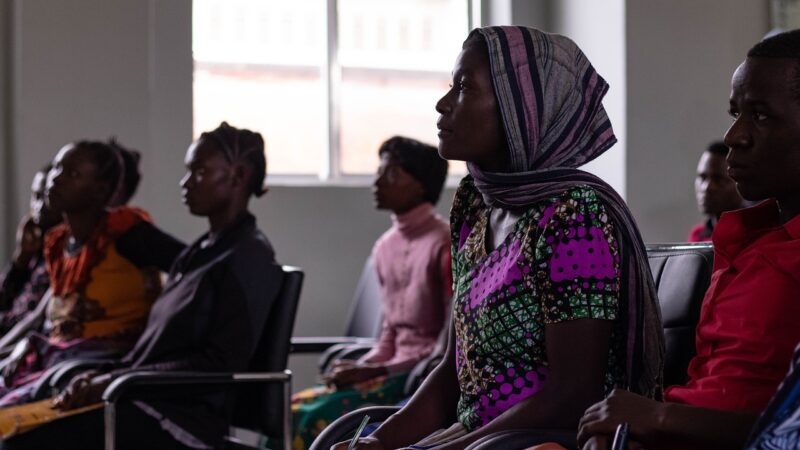Cultural Kaleidoscope: Understanding the Rich Tapestry of Global Cultures
November 18, 2024

In our increasingly interconnected world, understanding the diverse cultures that shape our planet is more important than ever. From vibrant traditions and languages to distinct foods and values, cultural diversity enriches our lives and broadens our perspectives. This article explores the significance of global cultures, how they influence our daily lives, and the importance of cultural appreciation in fostering peace and understanding.
1. Defining Culture: What Exactly Does it Mean?
Culture encompasses the social behavior, norms, beliefs, customs, and human-made artifacts that shape a group’s identity. It includes:
- Language: The primary medium of communication, language not only conveys information but also shapes thoughts and cultural identity.
- Religion: Spiritual beliefs and practices influence values, traditions, and community organization.
- Art and Music: Expression through visual art, literature, and music is a vital part of cultural identity and heritage.
- Customs and Traditions: Rituals and practices passed down through generations impact daily life, including celebrations, marriages, and mourning practices.
- Cuisine: The unique ingredients and cooking methods reflect cultural heritage and climate influences, making food a significant part of cultural identity.
Understanding this definition of culture allows us to appreciate the intricacies of lives around the globe.
2. The Importance of Cultural Diversity
Cultural diversity refers to the variety of cultural expressions and identities found within a society. This diversity is vital for several reasons:
- Fostering Creativity: Diverse perspectives spark creativity and innovation, leading to groundbreaking ideas and solutions across all fields.
- Enhancing Problem-Solving: A mix of cultural insights provides diverse approaches to tackling societal challenges, allowing for more comprehensive solutions.
- Cultivating Empathy: Understanding different cultures builds empathy and reduces prejudice, ultimately fostering an environment conducive to peace and collaboration.
- Economic Growth: Culturally diverse populations contribute to greater economic development through tourism, creativity, and innovation.
- Cultural Heritage Preservation: Valuing different cultures leads to efforts aimed at preserving cultural heritage and traditions, ensuring their continuation for future generations.
Cultural diversity enriches our experiences, allowing for deeper connections and understanding among people from different backgrounds.
3. Major World Cultures and Their Features
Consider the following major world cultures that represent the rich tapestry of human history:
3.1. African Cultures
Africa is home to over 3,000 ethnic groups, each with unique languages, traditions, and histories. Some notable aspects include:
- Traditional Music and Dance: Each ethnic group has distinct musical styles and dance forms, often integral to celebrations and storytelling.
- Artistic Expression: From intricate beadwork to vibrant paintings, African art showcases the region’s diversity and community values.
3.2. Asian Cultures
Asia is the largest continent, hosting various cultures, religions, and philosophies:
- Religious Diversity: Major religions including Hinduism, Buddhism, Islam, and Confucianism originate from this region, influencing values and societal structures.
- Culinary Richness: Famous for its flavors, Asian cuisine varies widely by region, often incorporating fresh ingredients and intricate cooking techniques.
3.3. European Cultures
Europe is known for its historical significance and contemporary influences:
- Historical Architecture: From Roman ruins to Gothic cathedrals, Europe’s architecture reflects its rich historical narratives.
- Festivals and Traditions: Each country hosts unique festivals, celebrating everything from cultural heritage to local traditions.
3.4. Indigenous Cultures
Indigenous cultures around the world are key to understanding humanity’s collective ancestry:
- Connection to Nature: Many indigenous peoples live in harmony with nature, valuing bio-diversity and sustainable practices.
- Oral Traditions: Rich storytelling traditions preserve knowledge, pass down history, and impart moral teachings across generations.
Each of these cultures offers unique perspectives on life, providing invaluable lessons for understanding humanity.
4. Cultural Exchange: A Path to Global Understanding
Cultural exchange plays a vital role in fostering understanding and cooperation among societies. Key elements include:
- Education and Awareness: Learning about other cultures through education promotes respect and empathy, equipping individuals with tools to navigate a multicultural world.
- Travel and Tourism: Experiencing other cultures firsthand enables travelers to break down stereotypes and appreciate global diversity.
- Cultural Events and Festivals: Festivals that celebrate cultural heritage encourage community participation, bolstering intercultural relationships.
Cultural exchange not only facilitates a deeper understanding of different lifestyles but can also break down barriers and promote global peace.
5. The Role of Technology in Cultural Preservation
Technology has transformed the way we interact with and preserve cultures. Current trends include:
- Digital Archives: Museums and cultural institutions are digitizing artifacts and records to make cultural heritage accessible to a broader audience.
- Virtual Reality Experiences:VR technology is enabling immersive explorations of cultural sites and events, bringing people closer to the world’s rich history.
- Social Media Platforms: Social media fosters global conversations, allowing individuals to share cultural practices, thus promoting awareness and appreciation.
As technology continues to evolve, it provides new opportunities for cultural education and preservation.
Conclusion: Celebrating the Global Cultural Tapestry
Understanding the rich tapestry of global cultures not only enhances our knowledge but also encourages a more interconnected and harmonious world. By embracing diversity, promoting cultural exchange, and utilizing technology to preserve our heritage, we can create an environment where every culture is respected and valued.
As we navigate a future filled with challenges and opportunities, let us celebrate our differences and recognize that they contribute to the beautiful mosaic of humanity. Together, we can cultivate a culture of empathy, understanding, and appreciation, ensuring that the richness of our global heritage continues to thrive for generations to come.







